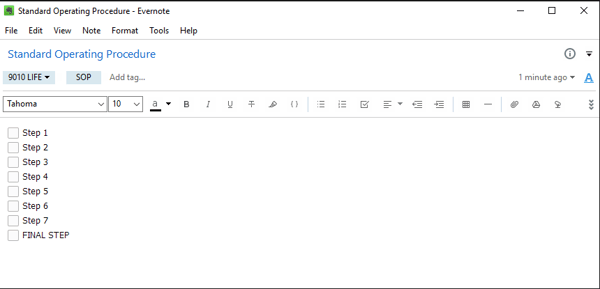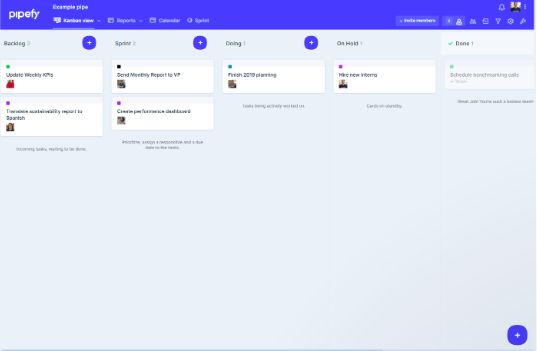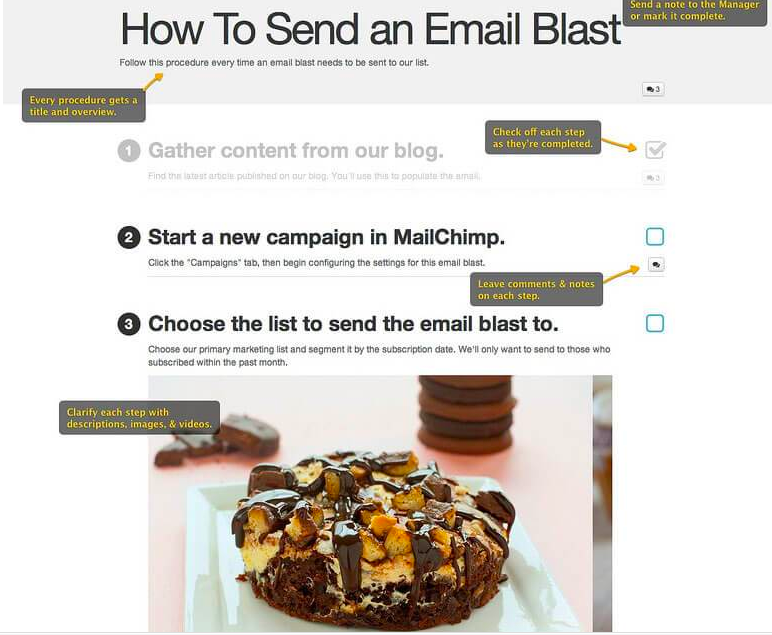Imagine this: You’re a project manager at a boutique marketing firm tasked with training the new PM and getting them up to speed on how to do their job to meet expectations. To fulfill this request, you probably had to learn a series of actions already set in place. That series of actions is called a standard operating procedure (SOP), and they help to routinize job functions.
A good SOP is clearly worded and easy to read. Well-written SOPs have steps that are short and simple and are usually presented in a flow chart or clearly labeled document.
 Image Source: Process.it
Image Source: Process.it
If you’ve never written an SOP before, take a look at how to write a great one.
1. Create a list of processes
To begin, come up with an in-depth list of functions employees perform for their jobs that need SOPs. Some departments that could benefit from SOPs include finance, legal, HR, customer service, and IT. Think about those jobs that have a strict protocol; where not missing one step is vital.
For example, a new public relations professional would need to know the processes of writing press releases and securing press for their company. This is a great reason for creating an SOP.
2. Format your process
You can get creative with how you present SOPs. As long as they are easy to understand, there are no bounds to how a workflow can be created. The most widely seen SOP formats include: Step-by-step documents, workflow diagrams, organizational charts, detailed instructions, and checklists.
What kind of format would the public relations professional best receive their SOP? Most likely a workflow diagram. This would allow them to see why they must complete one step in order to get to the next. From writing the headline at the top to including correct hyperlinks, every step would be clearly notated.
3. Communicate
Make sure the process you write is accurate. Talk to the employees who will be using it every day. Ask for their feedback and advice. If they can provide useful edits or tips that would make the SOP easier to understand, include them.
For example, a reliable source for an SOP on how to write a solid press release would likely be a senior publicist or manager at the company
3. Write
Write the SOP by using the method that works best for your situation. Think about who you’re writing the SOP for and how the information will best be presented. This is also a good time to figure out who will be responsible for updating the SOP as needed.
A public relations professional would most likely benefit from an SOP about how to write press releases that give specific directions about format. For example, “Paragraph one must be 50-60 words introducing the album, the band, and their concept for the record cycle,” and “Paragraph two must be 30-40 words and include short descriptions of 2-3 songs.”
4. Implementation
SOPs should be updated at least once a year after implementation. They should always reflect the needs of the organization at that time. Maintaining them is important so employees always have the most up-to-date information about what’s expected from their day-to-day.
SOPs aren’t the quickest or shortest guides to write. But they can become a time-consuming project. Software can help speed up the writing process, and we’ve rounded up a couple of superstars:
(was a little unsure about the formatting for the list)
1. Trello
Price: Free, $10 a month for Business Class Subscription, $20.83 per 100 users per month
Trello is a scheduling tool that allows its users to see their collaboration using “cards,” that are like virtual sticky notes for each board. Trello can be used for organization; from editorial calendars to SOPs.
 Image Source: Trello
Image Source: Trello
We like Trello for its ease of having all documents in one place. If you scroll through this Office Management board, you can see a list of responsibilities for certain employees.
2. HubSpot workflows
Price: Included with Marketing, Service, and Sales Service Hubs with Professional and Enterprise subscriptions.
HubSpot’s CRM includes the workflows tool, which allows users to use marketing automation technology within their business. Workflows turn actions and/or commands into customizable flow charts.
 Image Source: HubSpot
Image Source: HubSpot
We like the workflows tool for SOPs because it has the option to write out lists into a visual chart.
3. Evernote
Price: Free plan, then $7.99 per month for Evernote Premium, and $14.99 for Evernote Business.
Evernote is a popular note-taking app that lets you do a lot more than take organized notes. It offers numerous organization, collaboration, and administration functions. The app also has a number of templates, including one for SOPs.
 Image Source: Evernote
Image Source: Evernote
We like Evernote because of the compatibility with different operating systems and organization capability.
4. Pipefy
Price: Free plan, then $9 per month for Professional Plan, $18 per month for Business Plan, and contact-based for Enterprise Plan
Pipefy offers resources and tools for process management. Choose from an assortment of templates (seriously, there are so many), most of which are offered for free. There are a number of SOP templates that specify your organization’s needs, such as “Team Member Onboarding.”
 Image Source: Pipefy
Image Source: Pipefy
We love Pipefy because of its abundance of templates available and easy-to-understand template titles.
5. SweetProcess
Price: 14-day free trial, then $82.50 per month for a team of 20 members, plus $4.17 for each additional user.
SOP writing is SweetProcess’ main jam. Their tagline is, “Who said writing SOPs have to be painful?” so you can guarantee an easy-to-follow experience.
 Image Source: SweetProcess
Image Source: SweetProcess
For more free inspiration, check out HubSpot’s section of easy-to-use templates.
No comments:
Post a Comment